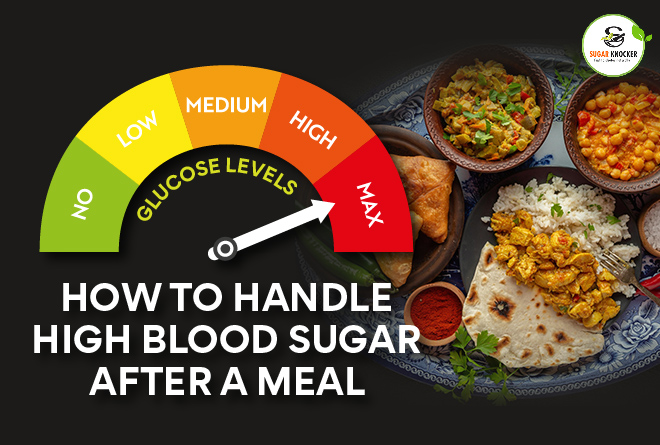
How to Manage Blood Sugar: Effective Tips and Strategies
Managing blood sugar levels is crucial for maintaining overall health, especially for individuals with diabetes or pre-diabetes. In this comprehensive guide, we will explore various strategies and tips to help you manage your blood sugar levels effectively.
Understanding Blood Sugar Levels
What is Blood Sugar?
Blood sugar, or glucose, is the main type of sugar found in your blood and is your body’s primary source of energy. It’s derived from the food you eat and is regulated by insulin, a hormone produced by the pancreas.
Normal Blood Sugar Ranges
For a healthy individual, normal blood sugar levels typically range from 70 to 99 mg/dL when fasting and less than 140 mg/dL two hours after eating. Maintaining these levels is essential for overall health and well-being.
Causes of High Blood Sugar
High blood sugar, or hyperglycemia, can be caused by various factors, including poor diet, lack of exercise, stress, and insufficient insulin production. Identifying these causes is the first step in managing blood sugar effectively.
Most Trusted Herbal Supplement & Best Ayurvedic Medicine For Diabetes
To begin with, what is a high blood glucose level?
Hyperglycemia, also known as high blood glucose, takes place when there is an excess of glucose in the bloodstream. It occurs when your body has insufficient insulin or when your body is unable to use insulin appropriately.
Spikes that happen after a meal are rises in blood glucose levels; these spikes are only temporary but can lead to severe issues in some cases. Even in persons who do not have diabetes, it is common for blood glucose levels to rise a modest amount after eating. Nevertheless, if the increase is excessive, it may immediately impact your quality of life and may lead to significant health problems in the future.
Why Sugar Levels Increases After Food?
It is a trivial matter of time for many patients with diabetes to experience a surge in blood glucose levels after eating.
Eating carbohydrates produces two significant responses in the pancreas in individuals who don’t already have diabetes: the instant secretion of insulin into the bloodstream and the production of a hormone known as amylin. Insulin begins to function immediately (shipping glucose from the bloodstream into cells) and completes its task in a short amount of time. Food does not reach the small intestine too rapidly because of the amylin. Consequently, as soon as blood glucose levels rise, insulin kicks in to transport the glucose into the body’s cells. In most circumstances, the blood glucose spike after a meal is hardly perceptible.
Rapid Acting Insulin
At mealtimes, rapid-acting insulin is given to a person (or infused by a pump), and it takes 15 minutes to start functioning, 60–90 minutes to reach maximum effectiveness, and four hours or more to conclude.
Amylin is made in limited quantities; food does not move from the stomach to the intestines as slowly as it should. As a response, food breaks down considerably more quickly than usual.
The fusion of sluggish insulin and quicker food might result in a rapid spike in blood glucose levels, i.e., high blood glucose levels shortly after eating. A quick dip counters the surge once the mealtime insulin comes in.
What are the symptoms of high blood glucose levels?

Knowing the early symptoms of hyperglycemia is particularly important if you have type 1 diabetes. If hyperglycemia in patients with type 1 diabetes is not addressed, it can progress to ketoacidosis, a condition wherein toxic acids called ketones accumulate in the blood. This is a life-threatening condition that can result in a coma or death. The most common high blood glucose level symptoms are:
- Increased thirst.
- Increased urination.
- Weight loss.
- Fatigue.
- Increased appetite.
Why should you be concerned about a high blood glucose level?

Although blood glucose spikes are only momentary after a meal, a series of spikes over time can elevate your glycosylated hemoglobin, or HbA1c, level, which has been linked to an increased risk of protracted diabetic issues.
Your HbA1c results of the test represent your typical blood glucose level at all times of day (before and after eating) over the previous two to three months, with the most recent days having a more significant impact on the outcome than the earlier days.
It is believed that post-meal blood glucose readings have a more substantial impact on HbA1c than pre-meal readings in patients with an HbA1c below 7.5 percent. To put it another way, decreasing your pre-meal blood sugar levels will only get you as of now. You should also pay close attention to your after-meal statistics if you want your HbA1c level to be as close to normal as achievable.
Long Term Consequences:
The long-term consequences of high blood glucose levels post meals have been thoroughly researched and should be prevented. Significant increases have been demonstrated to cause an increased incidence of kidney failure in individuals with type 1 diabetes and hasten the development of preexisting retinopathy, one of the most common visual ailments linked with diabetes. After meals, high blood glucose levels are a risk factor for coronary heart diseases in individuals with type 2 diabetes. Post-meal increases and glucose “fluctuation” have recently been linked to decreased cognitive ability and a higher risk of Alzheimer’s disease.
However, the issues aren’t restricted to long-term consequences. Health and wellness suffer when blood glucose levels rise to dangerously high, even if just for a short time. Energy levels drop, cognitive capacities deteriorate, athletic and sports ability deteriorate, and moods shift. Short-term high blood glucose levels significantly affect intellectual skills, synchronization, feelings, and emotions. Sharp increases in blood glucose levels hampered mental function, diminished concentration, reductions in energy levels, and caused emotions of melancholy and stress in individuals with type 2 diabetes.
Hypoglycemia:
Pseudo hypoglycemia symptoms can be caused by the quick drop in blood glucose after a post-meal increase. “Relative hypoglycemia” is the term for this condition. The abrupt decrease from a high blood glucose level to a baseline state might trick the mind into believing there is a problem, resulting in low blood glucose signs.
Furthermore, the consequences do not disappear quickly when blood glucose levels return to normal after a phase of post-meal high blood glucose. Each incident of high blood glucose can change the way some genetics work, causing the formation of damaging molecules known as free radicals, which can trigger inflammation and destruction to the linings of blood vessels for hours, if not days. Post-meal surges are certainly a problem that has to be addressed.
Sudden increase measurement
A high blood glucose rise can occur anytime, and the precise timing differs from person to person and mealtime to mealtime. On the other hand, peaks after meals often occur between one hour and 15 minutes after a meal begins. So, around an hour after eating a meal, monitor your blood glucose and see how much of a surge has occurred. Measure how much of a rise occurs after each one of these meals by checking before and after breakfast, lunch, and dinner multiple times. Substantial rises are the most typical after breakfast, the first meal of the day, but measure at least once or twice after each meal to see what is happening.
A continuous glucose monitor is a superior technique to track post-meal behaviors (CGM).
It is essential to measure your blood sugar levels; one method is to use a blood sugar level chart, which works as follows: The blood sugar chart describes blood sugar results in mg/dl based on the test type-fasting sugar, post-meal or postprandial, and Glucose tolerance test (GTT) for a regular person, in their early diabetes, or developed diabetes.
Graph of CGM

CGM devices for personal purposes can be bought for long-term or continuous use. Some specialized diabetic facilities provide them to you on rent for a short-term basis so you can keep track of your blood glucose levels at all times.
A throwaway sensor filament is put just beneath the skin, a tiny transmitter is linked to the device, and a receiver shows your information in CGM systems. A portable device, an insulin pump, a cell phone, or even a wristwatch can be used as the receiver.
The data from all of the devices can be uploaded to a database for analysis. Consider taking your pre-meal readings into account when assessing your readings, even if you use a fingerstick or a CGM. A rising or falling reading before a meal will almost always result in a higher reading after that. Lows before actual meals can slow digestion and cause a hormonal “putback,” resulting in considerably higher readings.
Since when you consume your snacks and meals, it affects your blood glucose levels. Adhering to the same routine from day to day will help maintain your levels stable and regular. It’s also crucial to time your medicine and insulin therapy with your eating plan. Insulin shots are said to be the most successful when taken in such a manner that the insulin begins to act as soon as the glucose from your meals enters your bloodstream.
Herbal Diabetes Capsules for Effective Diabetes Management
Choose the Healthiest Carbohydrates

Carbohydrates have the most significant impact on blood sugar levels of all the primary nutrients included in meals (carbohydrates, proteins, and fats). It is because carbohydrates are the fastest to break down into glucose for strength. Blood sugar rises can occur if you consume too many carbohydrates or the wrong kind of carbohydrates.
Testing your blood sugar levels before and after meals is indeed the best approach to find out just how carbohydrates affect your blood sugar. The proportion of food you must eat will vary depending on how well you control your diabetes. Select vegetables and fruit, whole grains, beans, and lentils as healthful, complex carbohydrates. These foods do not produce as many blood sugar fluctuations since they contain fibers and are somewhat less processed. Avoid refined carbohydrates like soda, sweets, white pasta, white rice, white bread, and other highly processed foods since they can lead to high blood sugar levels.
Carbs are broken down into simple sugars (mainly glucose) by your body. And insulin aids in using and storing sugar for energy. When you consume too many carbohydrates or have issues with insulin, this mechanism breaks down, leading to high blood glucose levels.
Eat More Fiber

Fiber is a special form of carbohydrate that isn’t broken down by the body; hence it does not affect blood sugar levels when consumed. It also aids digestion and makes you feel satiated for an extended period after a meal. It also is advantageous for individuals with diabetes because it lowers the rise in blood glucose levels after a meal.
According to research, those with diabetes who consume enough fiber daily have better blood sugar management than those who do not. It is believed that an average person should consume around 20 and 35 grams of sugar per day. Eating whole grains, beans, veggies, and fruits with the skin on is one of the most excellent methods to achieve this aim. Think about working with a diabetic educator or a registered dietitian if you need help figuring out how to get adequate fiber in your diet. An expert can provide you with suggestions and advice.
Fiber delays the digestion of carbohydrates and sugar absorption. As a result, it encourages a steadier increase in blood glucose levels.
Additionally, the type of fiber you consume may have an impact.
Fiber is divided into two types:
- insoluble
- soluble
While both are beneficial, soluble fiber has been demonstrated to help with blood sugar regulation. A high-fiber diet can also aid with type 1 diabetes management by boosting the body’s ability to control blood sugar and lowering high blood sugar levels.
Fiber-rich foods include the following:
- vegetables
- fruits
- legumes
- whole grains
Fiber consumption should be around 25 grams for women and 38 grams for males per day. For every 1,000 calories, that’s about 14 grams.
Drink More Water

With diabetes, what you eat and what you drink has an impact on your blood sugar levels. Diet Soda is not a nutritious alternative for sugary beverages. But if you have to choose between regular and diet soda, the diet version is superior. Water is by far the most healthy and normal option. A whole other advantage of water is that it might make you feel satisfied before a meal, which can save you from overeating.
Drinking plenty of water will help you maintain a healthy blood sugar level.
It assists your kidneys in flushing out excess glucose through urine, as well as reducing dehydration. According to one observational study, individuals who consume more water had a reduced likelihood of developing high blood sugar levels.
Frequently drinking water rehydrates the blood, decreases blood sugar levels, and may lower the risk of diabetes.
Water, as well as other non-caloric beverages, are the best options. Sugar-sweetened beverages elevate blood glucose levels, contribute to obesity, and increase the risk of diabetes.
Dietary Changes to Manage Blood Sugar
Foods to Include in Your Diet
Incorporate foods that are low in glycemic index (GI), such as whole grains, fruits, vegetables, and legumes. These foods are digested slowly, causing a gradual rise in blood sugar levels.
Foods to Avoid
Avoid high-GI foods like sugary snacks, white bread, and sugary drinks. These foods can cause a rapid spike in blood sugar levels, leading to hyperglycemia.
Meal Timing and Frequency
Eating smaller, more frequent meals throughout the day can help maintain steady blood sugar levels. Avoid skipping meals, as this can cause blood sugar levels to fluctuate.
Lifestyle Modifications
Importance of Regular Exercise
Regular physical activity helps your body use insulin more efficiently. Aim for at least 30 minutes of moderate exercise, such as walking or cycling, most days of the week.
Stress Management Techniques
Chronic stress can raise blood sugar levels. Incorporate stress-reducing techniques such as yoga, meditation, or deep breathing exercises into your daily routine.
Quality Sleep and Blood Sugar Control
Getting adequate sleep is crucial for blood sugar management. Aim for 7-9 hours of quality sleep per night to help regulate hormones that control blood sugar.
Medications and Supplements
Common Medications for Blood Sugar Management
Medications such as metformin, sulfonylureas, and insulin are commonly prescribed to help manage blood sugar levels. Always consult with your doctor before starting any medication.
Natural Supplements to Consider
Some natural supplements, like cinnamon, berberine, and alpha-lipoic acid, may help lower blood sugar levels. However, consult with your healthcare provider before adding any supplements to your routine.
Consulting with Your Doctor
Regular check-ups with your doctor are essential to monitor your blood sugar levels and adjust your treatment plan as needed. Always discuss any changes in your diet, exercise, or medication with your healthcare provider.
Conclusion:
The more you understand the elements that determine your blood glucose level. The better you will predict volatility and prepare accordingly. If you’re having a hard time keeping your blood sugar levels within your specified limit, seek assistance from your diabetes healthcare professional. High blood sugar levels can lead to many serious diseases, which is why keeping your diabetes in check and watching what you eat is very important. Eating a nutritious, well-balanced diet is essential. Other methods for lowering or managing blood glucose levels usually involve guzzling plenty of clear liquids to prevent dehydration, exercising on a routine basis, proper management of stress attempting to maintain average body weight, or, if required, trying to lose weight.
Diabetes patients might also have to seek medical care and regularly monitor their blood sugar levels to minimize the chances of potentially hazardous symptoms.


